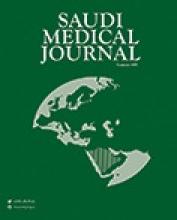Abstract
OBJECTIVE: To investigate if combination therapy with liposomal amphotericin B LAmB, and caspofungin CAS is superior to monotherapies in an experimental model with azole-resistant Candida albicans
METHODS: This study was carried out between October 2006 and August 2007 in Celal Bayar University, Manisa, Turkey. A total of 144 mice were included in the study, and divided into 4 groups as: control n=36, CAS treatment group n=36, LAmB treatment group n=36, and combination therapy group n=36. Treatment efficacy was assessed by determining survival, as well as, the decrease in tissue fungal densities.
RESULTS: The fungal densities in tissues were significantly reduced, and the survival rates were prolonged with either CAS only, or LAmB only, or with combination therapy compared to those of controls p<0.05. There was no significant difference between monotherapy groups. Decrease in tissue fungal densities were significant in CAS and LAmB 1mg/kg combination group, compared to CAS 1mg/kg and LAmB 1mg/kg groups p=0.004 for CAS, p=0.009 for LAmB. Survival rates were similar in both treatment groups.
CONCLUSION: The combination treatment was superior with 1mg/kg of doses of LAmB and CAS in terms of reducing the tissue fungal burden. Although with combination therapy the survival rates prolonged in all subgroups, no significant difference between the combination and monotherapies could be shown. Additional studies with a large number of cases are warranted to investigate the superiority of combination therapy.
- Copyright: © Saudi Medical Journal
This is an open-access article distributed under the terms of the Creative Commons Attribution-Noncommercial-Share Alike 3.0 Unported, which permits unrestricted use, distribution, and reproduction in any medium, provided the original work is properly cited.






